Cold Chain Logistics: Management Challenges & Solutions
The supply chain is a term used to describe all the components required to transport goods from beginning to end, from production to the end...
15 min read
 BUKU Marketing
:
Dec 7, 2022 1:00:00 PM
BUKU Marketing
:
Dec 7, 2022 1:00:00 PM

Understanding how to reduce product returns for a Shopify store is a major step to increasing its profitability. One difficulty all retailers face is the dreaded customer return.
Table of Contents
1. Why Do Customers Return Items?
2. Detailed Descriptions and Images Reduce Product Returns on Shopify
3. Encourage Feedback & Reviews from Existing Customers
4. Have a Straightforward Return Policy that is Easy to Find
5. Returns for Damaged or Defective Products
7. Identify Frequent Returners
8. Offering Real-Time Support Helps Reduce Returns
9. Final Thoughts on Reducing Product Returns
Shopify reports that eCommerce returns cost online retailers around $550 billion every year.
Studies show that the average return rate for eCommerce stores is around 20%, compared to the return rate of only 8-10% for brick-and-mortar stores.
Customers return items for many reasons. Specifically in eCommerce, due to the digital nature of online sales, customers are unable to examine a product in person before purchasing, which directly increases the returns.
For example, Shopify has identified the top reasons consumers return items in the fashion category, which is one of the biggest market segments in eCommerce.
The good news is that there are many ways you can reduce product returns on Shopify, from optimizing your return policy to providing as much information about the product as you can to avoid temporary purchases.
In this article, we discuss the best ways to improve your Shopify store's return policy and focus on ways to reduce your Shopify store’s overall returns.
Let's get started!
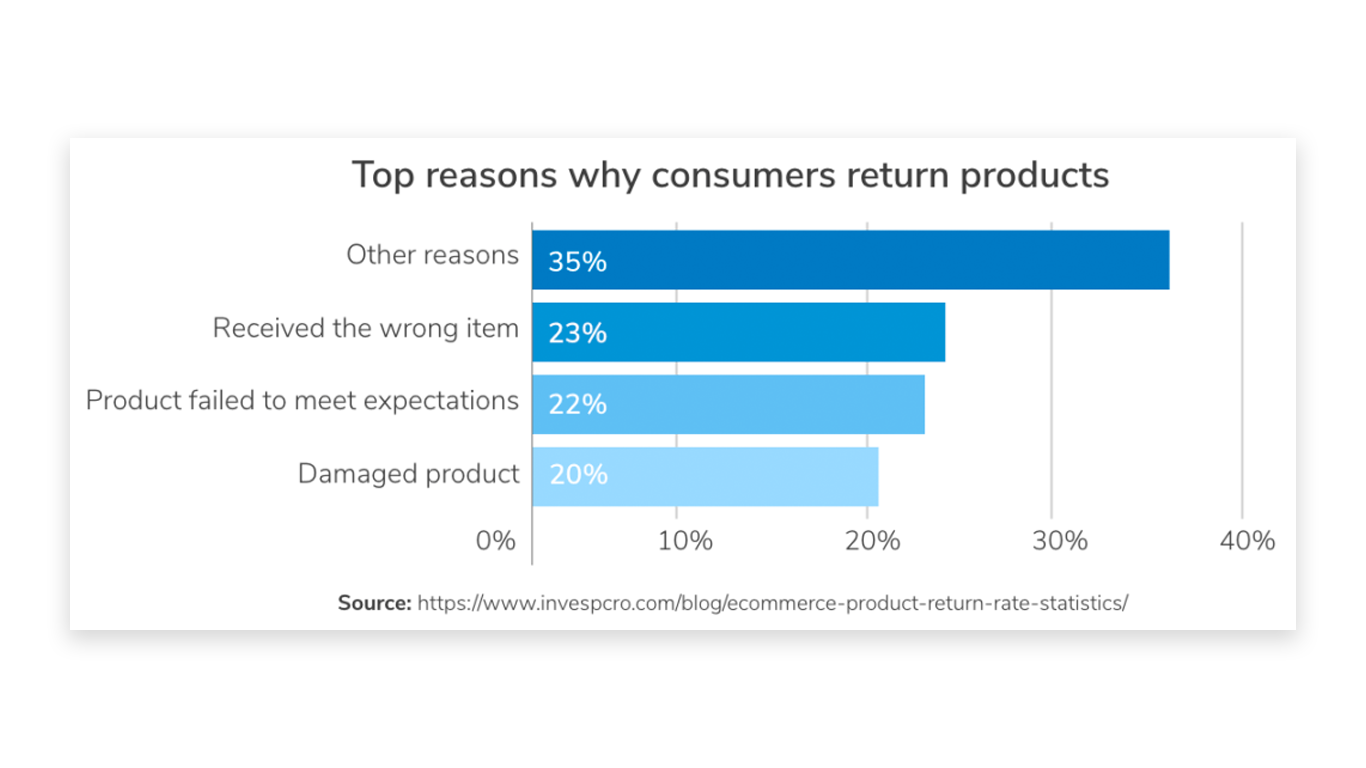
If you want to reduce product returns in your Shopify store, it’s important to understand why customers are returning products in the first place.
First, let's examine the top reasons customers return products.
Purchasing the wrong item typically occurs in businesses that sell products that the customer must try first. For example, in the fashion industry, customers return items that were purchased by mistake, such as choosing the wrong size, fit, or color. Since there are no digital dressing rooms, customers are unable to try on products to check the fit, which means there is a high chance that they will need to return an item.
There is always a chance that an online buyer will purchase an item and then decide they don’t need it by the time it arrives. This could be because they found a comparable item in a brick-and-mortar store, or because their situation changed in some way.
Since online retailers rely so heavily on product descriptions and images to sell their products, customers might get the wrong idea about the item they are purchasing. This is especially prevalent when eCommerce stores have low-grade images or product descriptions that aren’t detailed enough. If a product doesn’t live up to the buyer’s expectations or doesn’t match what the product description says, they are likely to ask for a refund.
Shopping for someone else is sometimes more difficult than shopping for yourself. Consumers might buy an item they believe would make a great gift only to find out later that it's not what the recipient wants, or that someone else purchased a similar item.
Whether the item was damaged before it left your inventory or damaged during delivery, a customer who receives damaged merchandise will want a refund. In these instances, a customer returning an item is the best outcome, because hopefully, they will simply exchange the item for a new one instead of requesting a chargeback with their bank.
It happens. Errors during the order-fulfillment process, whether completed by yourself or a third-party shipper, could mean that customers receive the wrong items entirely. In this situation, a return is the best outcome, otherwise, the customer can decide to never buy from your store again.
If the customer is purchasing an item for a specific event and they do not receive it in time, then it may end up as a return. Shipping delays can lead to this type of return, which is why it's so important to choose reliable carriers to ship your products.
Buyer’s remorse typically happens at the end of the month, when consumers realize they have overspent and are now facing a budget shortfall. This scenario can also happen simply because of impulse buying – meaning the customer realizes they purchased an item without thinking it through and have decided they no longer want the item.
A customer who purchases an item online and then sees that same item advertised at a lower price somewhere else might opt for a return to save some cash. This type of return becomes more likely as the price of the item rises. The more expensive an item is, the more likely a customer will be to return it for a lower price somewhere else.
Retail fraud is a lucrative business and one that hurts eCommerce stores in a big way. This type of fraud can occur in several different ways. Customers might buy an item to use it and then return it later, a practice known as "wardrobing." Or they might buy a new item only to return an older, used version of that same item in an attempt to pass it off as new. They might even purchase items on a credit card and request a chargeback from the credit card company.
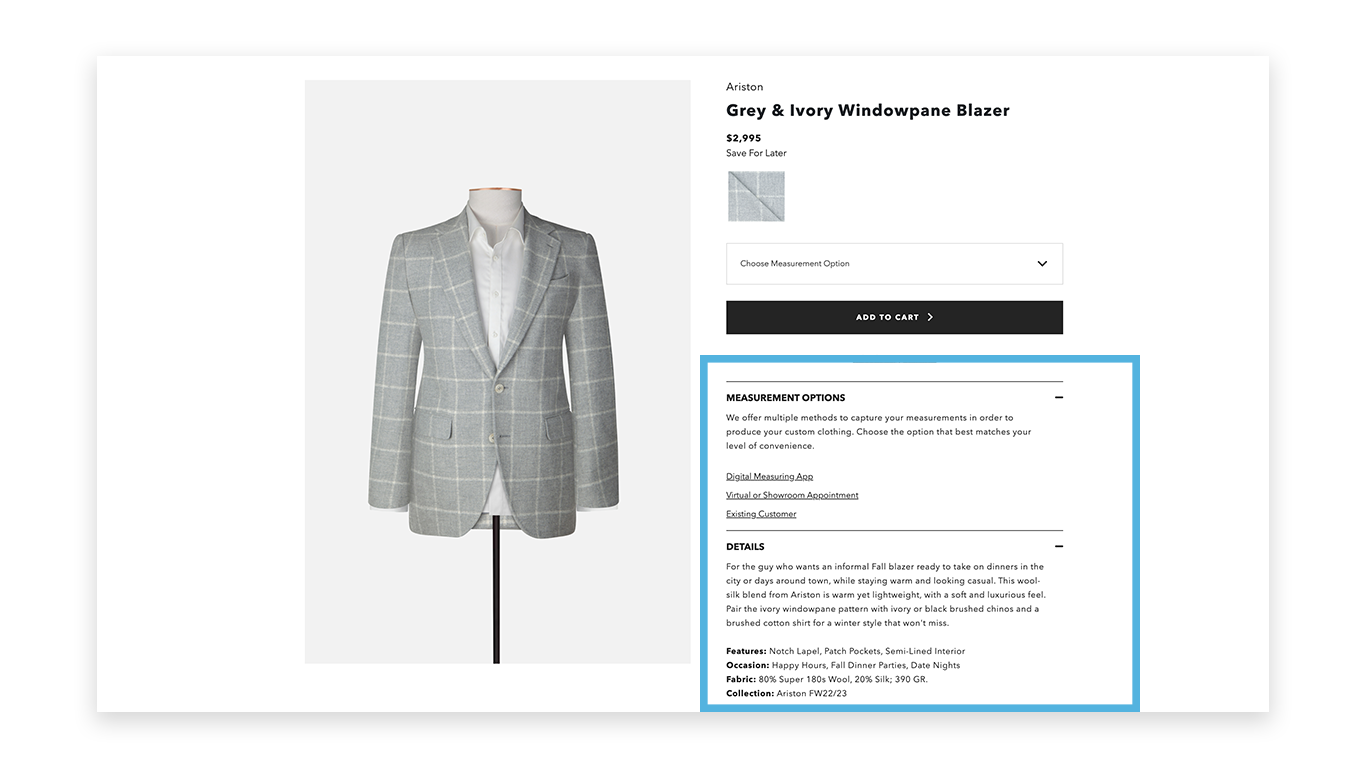
One of the biggest differences between brick-and-mortar retailers and eCommerce stores is the way that customers examine products before purchasing.
In a brick-and-mortar store, shoppers can hold an item in their hands before deciding to buy. They can check the size and dimensions of items and possibly even see the item in action.
Ecommerce stores don't have that same convenience and instead must rely on text, images, or video to relay information about a product to shoppers. 90% of eCommerce shoppers rate this content as extremely or very important in their decision to buy an item or not.
One of the best ways to reduce product returns in your Shopify store is to ensure your product descriptions are as detailed and accurate as possible, so shoppers have a clear idea of what exactly they are purchasing.
Here are some tips on how to accomplish that:
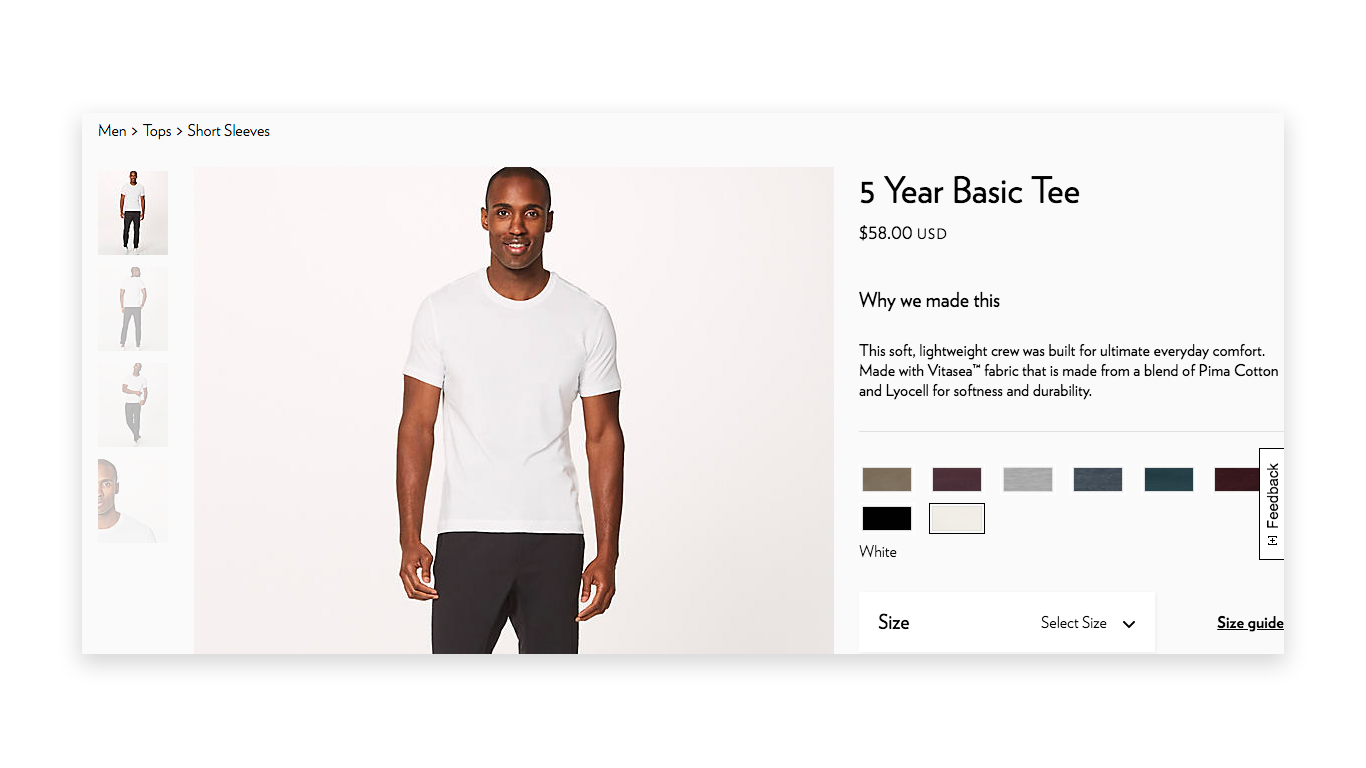
It might be tempting to list every single aspect or benefit of an item in the product description so that customers will have no misconceptions. However, product descriptions that are too lengthy and not targeted to the most important information will likely result in the consumer either not reading the full text or simply choosing not to buy altogether.
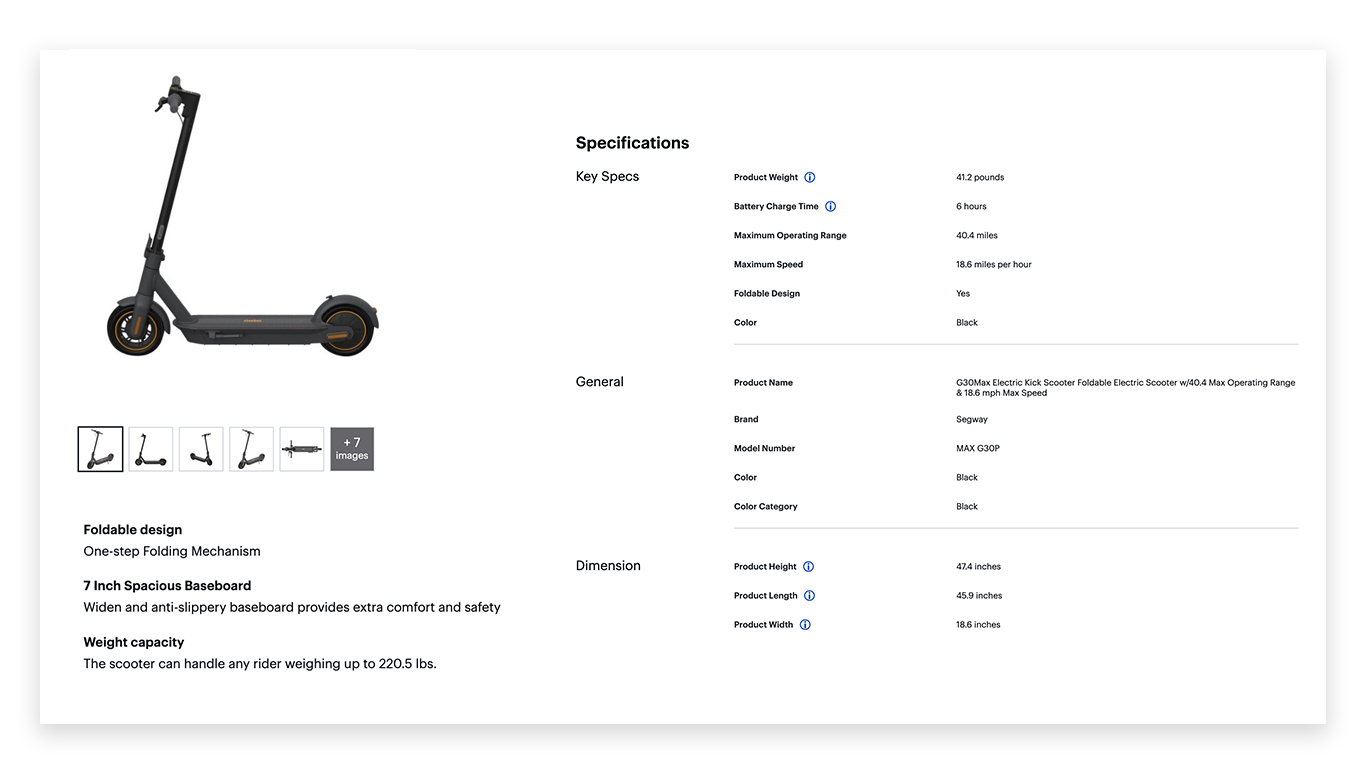
Stick to listing the key features of an item, like the dimensions, colors, or size. A brief description that captures the main aspects of the item will communicate information better than an over-the-top paragraph filled with adjectives and superlatives. Focus instead on sensory words that help describe how an item looks or feels.
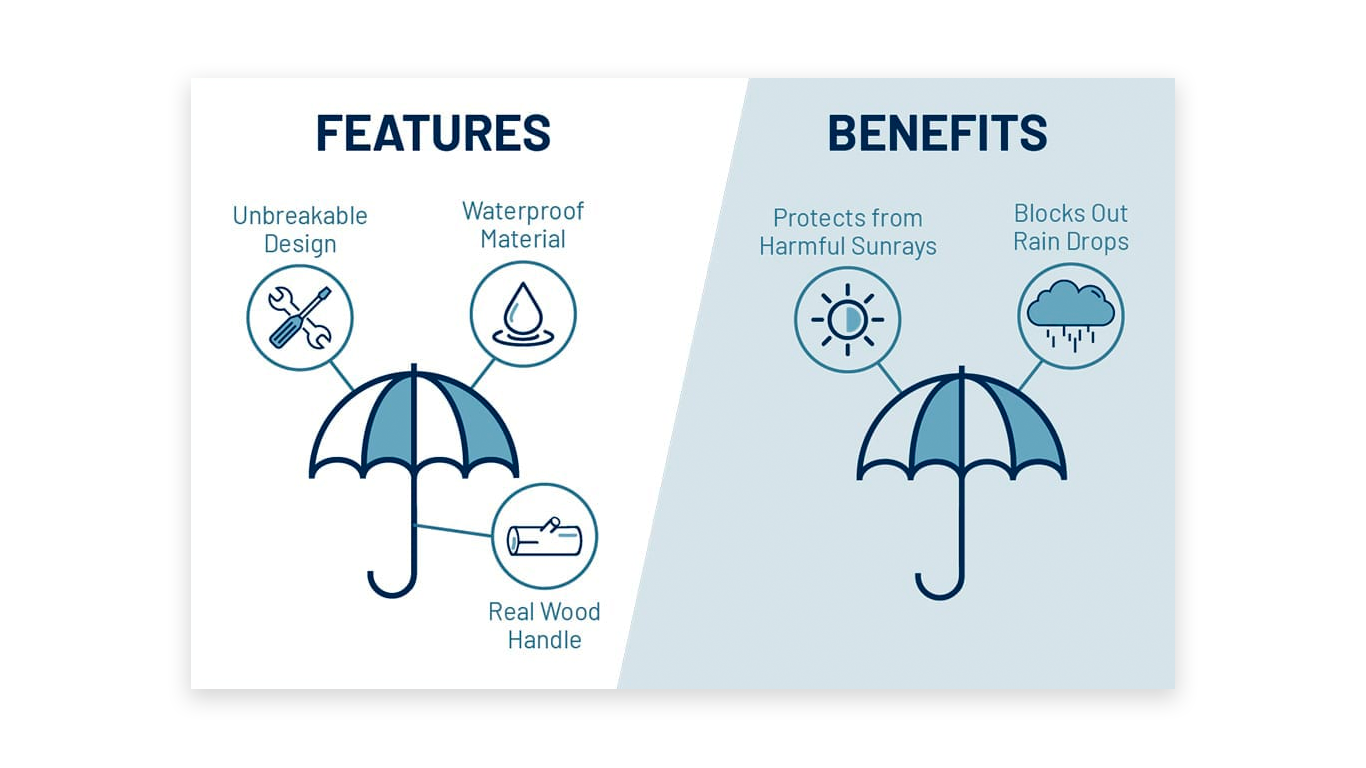
Listing the main benefits of the product will help consumers understand why they should decide to buy. Include information about the return policy and any other essential information the consumer might need. Demonstrate how the product will benefit the customer.
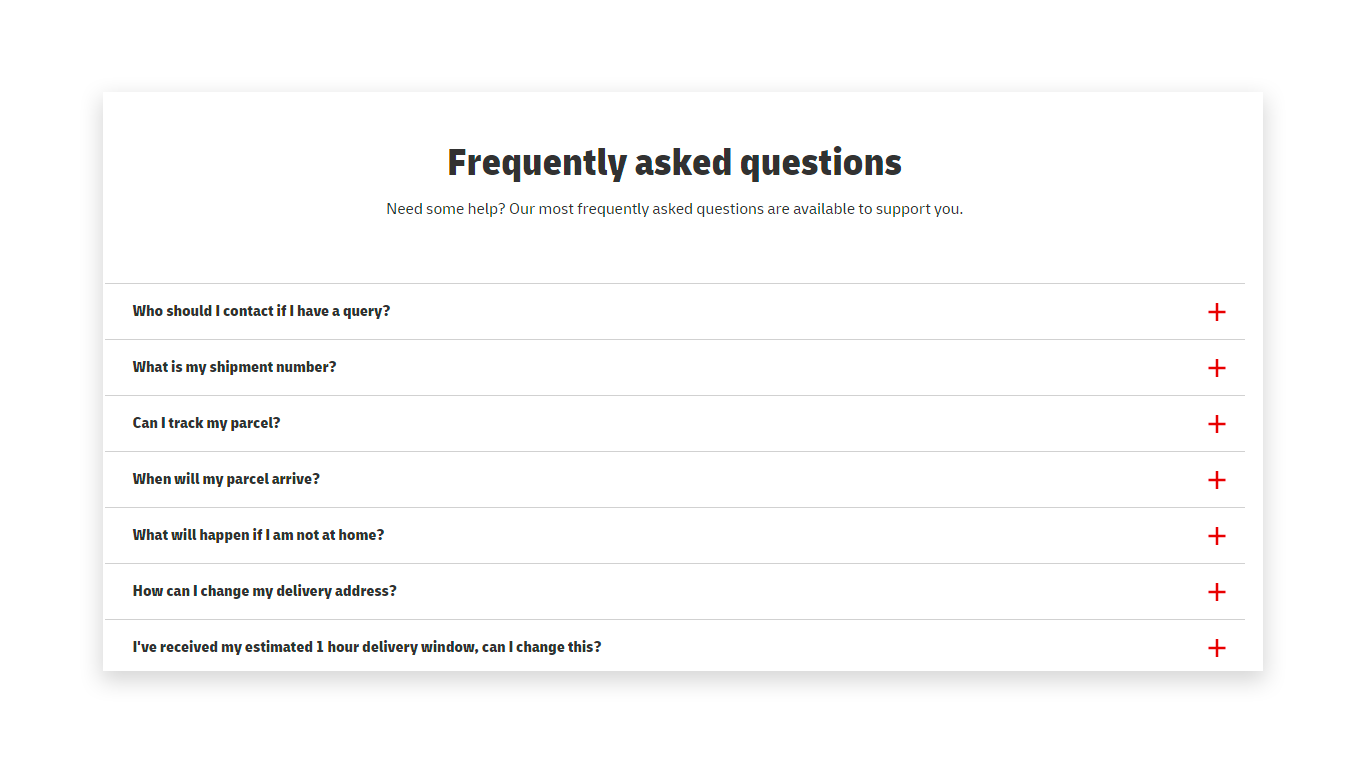
Focusing on answering the most commonly asked questions ensures including the information that customers are looking for. Put yourself in your customer’s shoes and ask yourself what you would want to know about a product before hitting that buy button.

The product image is likely the most important part of the description. Customers want to see a product before they buy, and it's your job as the eCommerce store owner to ensure that the images you display correctly portray the items you are selling. Make sure you are not misrepresenting items, and at the same time, displaying them in the best possible light.
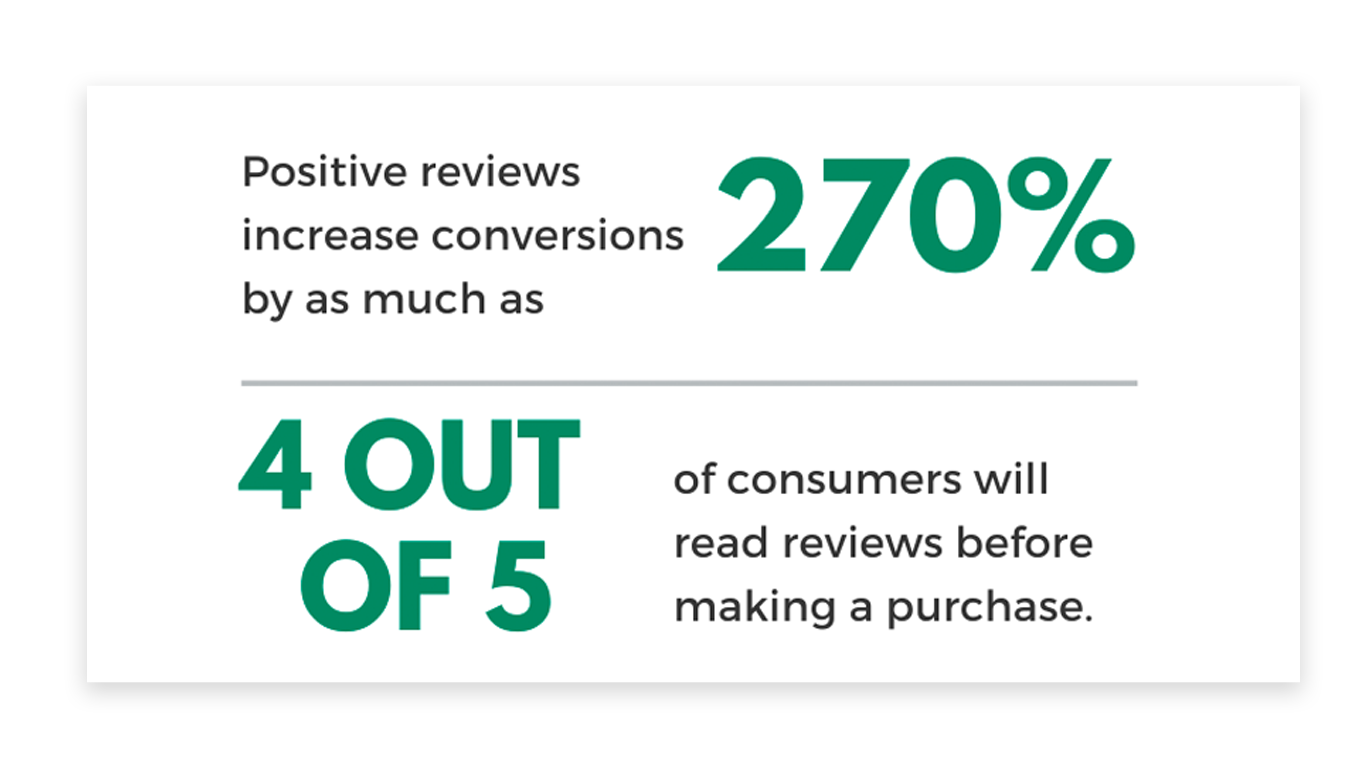
One company found that products with listed customer reviews had a 20.3% lower return rate than those that didn’t offer reviews.
In a study from Boston University, researchers examined how product reviews impacted return rates. They based their results on several factors, including the perceived cost of the return, the precision of the review in question, and whether people perceived the reviews as positive or negative – a factor known as “valence.”
The researchers concluded that the "valence" of the review effectively indicated the quality of the product and that products with higher ratings resulted in both higher sales and a lower return rate.
What does all this research mean for you, as the eCommerce shop owner?
Simply put – customer reviews provide another way to demonstrate the value and quality of a product, and your customers will consider those reviews in their decision-making process. And when buyers have a better understanding of the quality and features of an item they are purchasing, then they are less likely to return that product!
So, should you simply ask customers to leave a review after a positive experience purchasing your products? You can – but you will get better results if you incentivize the process by offering customers a reward in exchange for their opinions. Of course, honesty is a given here. If you manipulate your customers to leave only good reviews, then your customers still won’t be clear on what they are purchasing.
Here are some tips on how to get persuade customers to share their feedback.
Utilize multiple channels – Social media platforms are a great way to obtain feedback from customers. Set up profiles on the platforms your customers frequent the most and they will be able to review your company through that platform and comment about their positive experiences.
Offer giveaway entries – Incentivize your customers and let them know that in exchange for their feedback on a purchase, they will be entered into a drawing or giveaway for a reward.
Offer discounts on future purchases – Understand that offering customers an incentive should not be perceived as a way to bribe shoppers into leaving positive reviews. However, offering a discount on a secondary purchase is not only a great way to persuade customers to share their experiences but helps increase the likelihood of a follow-up purchase!
Offer gratitude – Sometimes a simple “thank you” is a reward unto itself. Customers have lots of choices when it comes to shopping online, so make sure to reach out and thank them for their business. They will appreciate the effort you made to express your gratitude and offer great customer service, and you can ask for a review at the same time. Be sure to express your gratitude to the customers who voluntarily choose to leave a review on your website or social media as well.
Send follow-up surveys – One of the best ways to get customer feedback is simply to ask for it. Send out a survey after purchase to let customers know you value their opinion. Be sure to ask questions that reveal details about their experiences. You can offer customers the choice to leave a review at the end of the survey. Chances are if they were highly satisfied, they will take you up on the offer.
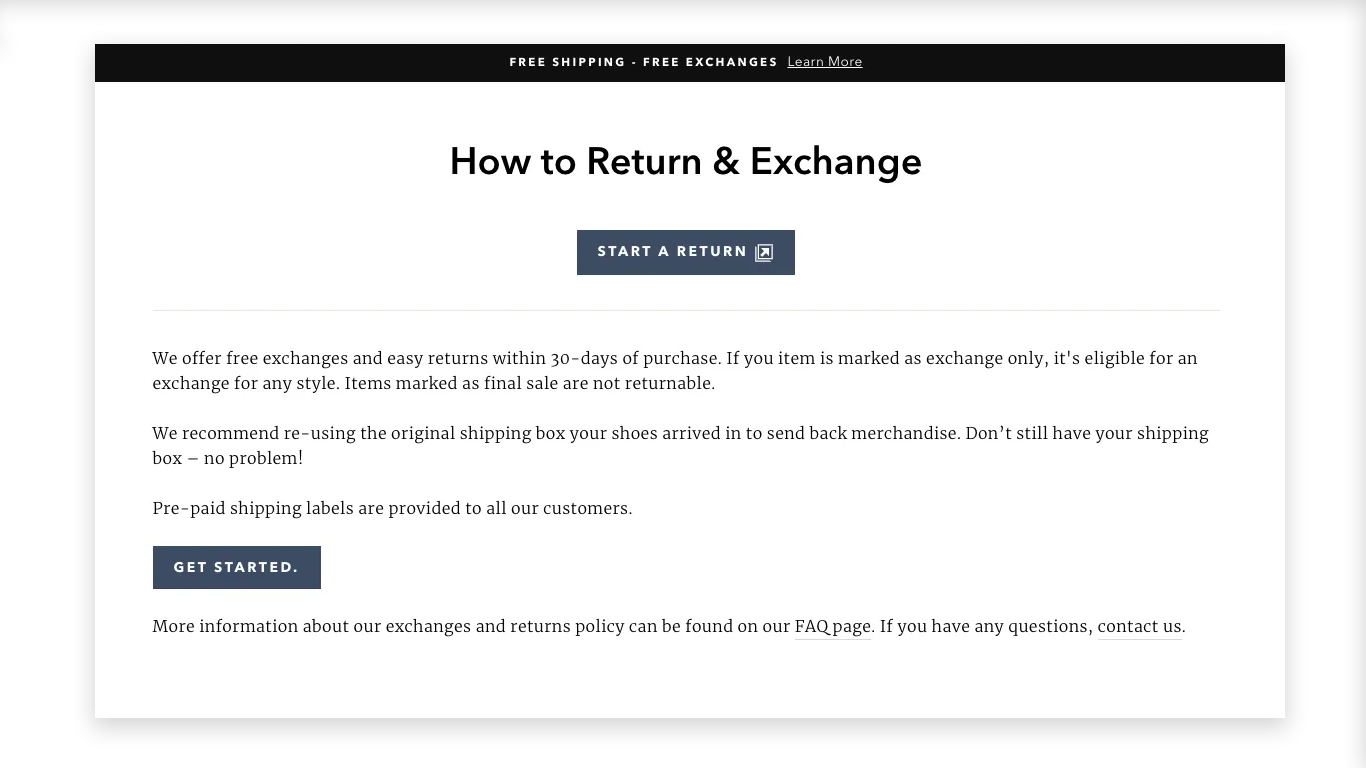
Every company needs a return policy for several reasons. First, it protects your business by laying out some rules and guidelines as to what’s acceptable and what’s not, so that customers are less able to take advantage of you.
Second, and most importantly, it helps demonstrate to customers that purchasing from your business is safe, and they will be allowed the opportunity to return items that don’t meet their expectations.
A well-crafted return policy uses straightforward language that the customer can easily understand. It includes clear policies regarding timelines and procedures for processing a return and is readily available to customers without them needing to search through web pages to find it buried in the fine print.
Providing customers with a positive experience when handling returns is paramount to earning their loyalty. 92% of customers will make a follow-up purchase after a positive experience making a return. With a percentage that high, it only makes sense to take steps to ensure every return goes smoothly.
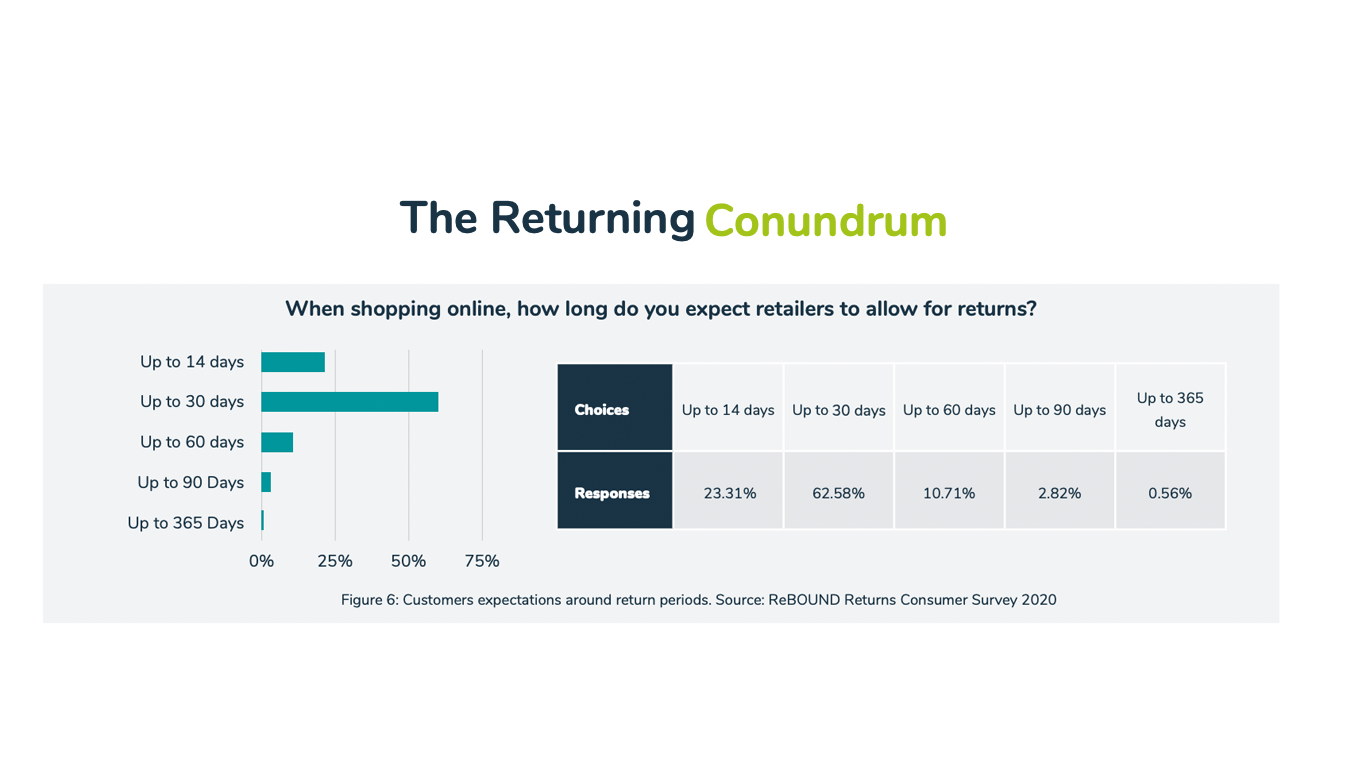
Studies show that 62% of customers expect an exchange or refund to be offered within 30 days of purchase. Aside from that, one-quarter of shoppers say waiting too long for a return to process adds to their negative view of the experience. Be sure to communicate how much time customers have to initiate a return to prevent a long line of unhappy buyers.
Third-party logistics companies can not only handle the shipment of goods for you but also manage the shipping of returns as well. This takes a lot of the legwork out of the process and speeds completion of the return for the customer.
Customers might not go looking for your return policy before deciding to purchase an item, but they will take a look at the product description. Provide basic information about acceptable returns, timelines, and potential costs (e.g. restocking fees) as a part of the product description and provide a link that will direct the customer to the full policy, so there are no questions left unanswered.
Not every eCommerce retailer has a brick-and-mortar presence. If you have both an online store and a physical location, customers will appreciate the ability to return items in person. This also gives retailers the ability to easily convert returns into exchanges or upsells.
Customers expect the ability to click a button and print a return label. Don’t rely on the old-fashioned method of sending return labels with the purchase, because keeping track of paperwork is not something customers want to worry about. You can also protect yourself by providing customers with a return list. This reduces the chance that customers will claim to have returned an item that wasn’t placed into the return shipping box.
Starting off the shipping customer experience on a good note is extremely important. If the customer see accurate delivery dates and knows when the product should arrive by they are left more satisfied when their product arrives. Without this knowledge the customer is left guessing and causes an immediate wedge between the brand and the consumer that shouldn't be there. All of this is possible through BUKU's shipping software.
Free shipping is a perk that many online shoppers have come to expect, and that includes return shipping. While providing this service will likely cut into your bottom line, not doing so will mean a big hit to customer loyalty. Asking customers to pay for return shipping when the items they received were damaged or arrived not as expected can damage your company’s reputation.
Many countries have regulations in place that are designed to protect consumers. For instance, in the U.S., retailers are required to accept returns on defective items, and buyers have three days to change their minds on purchases that are $25 or over. These laws may vary by jurisdiction, so be sure to do your research before getting yourself in trouble.
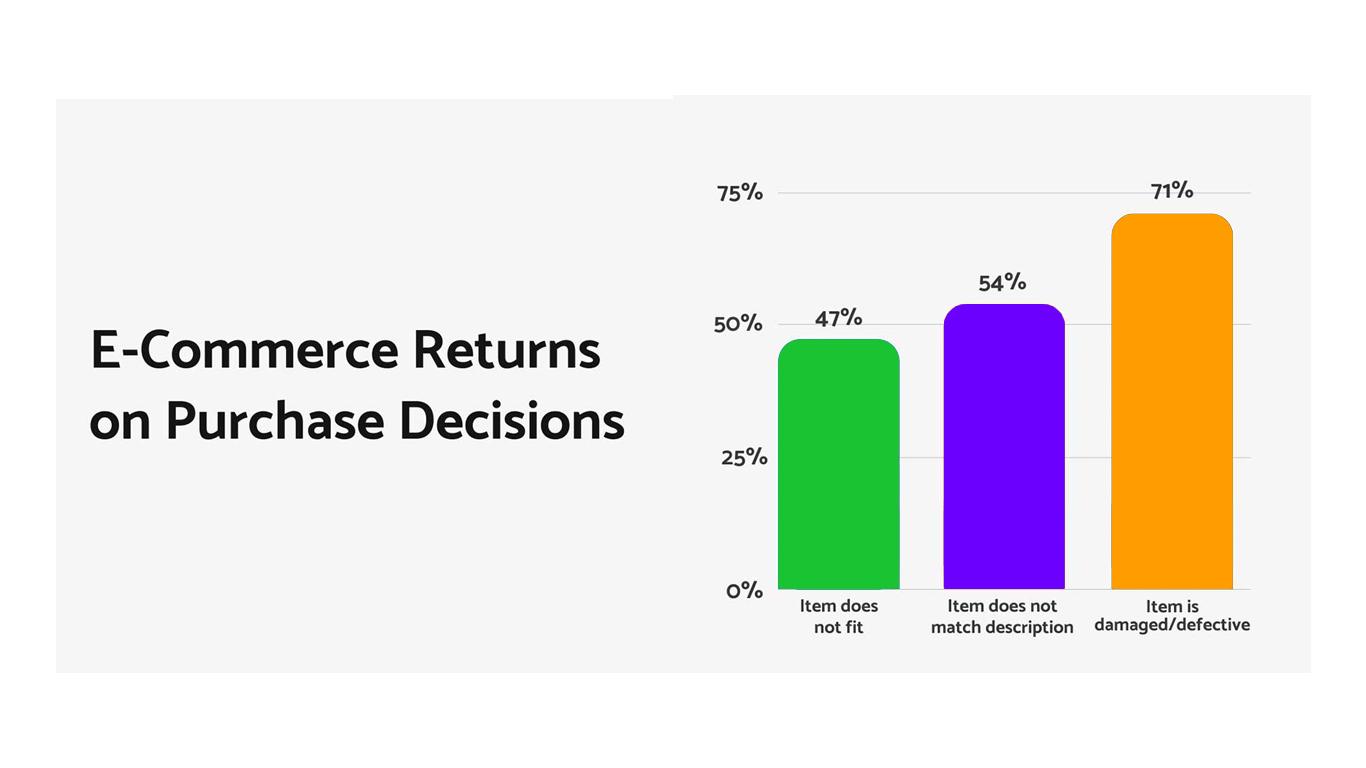
There are a lot of ways that online retailers can reduce product returns, but sometimes situations arise that are simply out of your control.
Once a product leaves on its journey to the buyer, the overall care for the item is out of your hands. That's why Shopify store owners need to take precautions to prevent damaged or defective items from making their way to customers.
It might not be your fault that an item is damaged during shipping, but the negative experience will still reflect on your business. Customer loyalty will suffer when shoppers pay good money for a broken item. Be sure to choose shipping carriers that have a good reputation to reduce the chances that your product will be mishandled during delivery.
A great way to cut the cost of return shipping is to allow customers to keep the damaged item and simply offer to send them a new one. If the item is damaged, then chances are you will not be able to resell it anyhow, but the buyer might still be able to use it.
87% of consumers say being provided with the opportunity to keep a damaged item and still be offered a refund increases the likelihood of them visiting that retailer in the future.
The path from your warehouse to your customer’s home is not a straight line. There will be many chances for items to be broken or damaged during the process. That’s why packaging products carefully is so important.
Take extra care with fragile items or those that are sensitive to extreme temperatures. If you notice a lot of damaged returns on a particular item, then it likely means a revisit of your packaging materials is in order.
Some eCommerce stores rely on third-party suppliers for their products, and these companies have a great deal of influence on your return rate. Inventory needs to be stored in temperature-controlled facilities and kept safe from moisture or pests. If those shipments come to you first, then you can examine them yourself. If your customers are receiving defective goods from a third-party supplier, then it might be time to consider a new supplier.
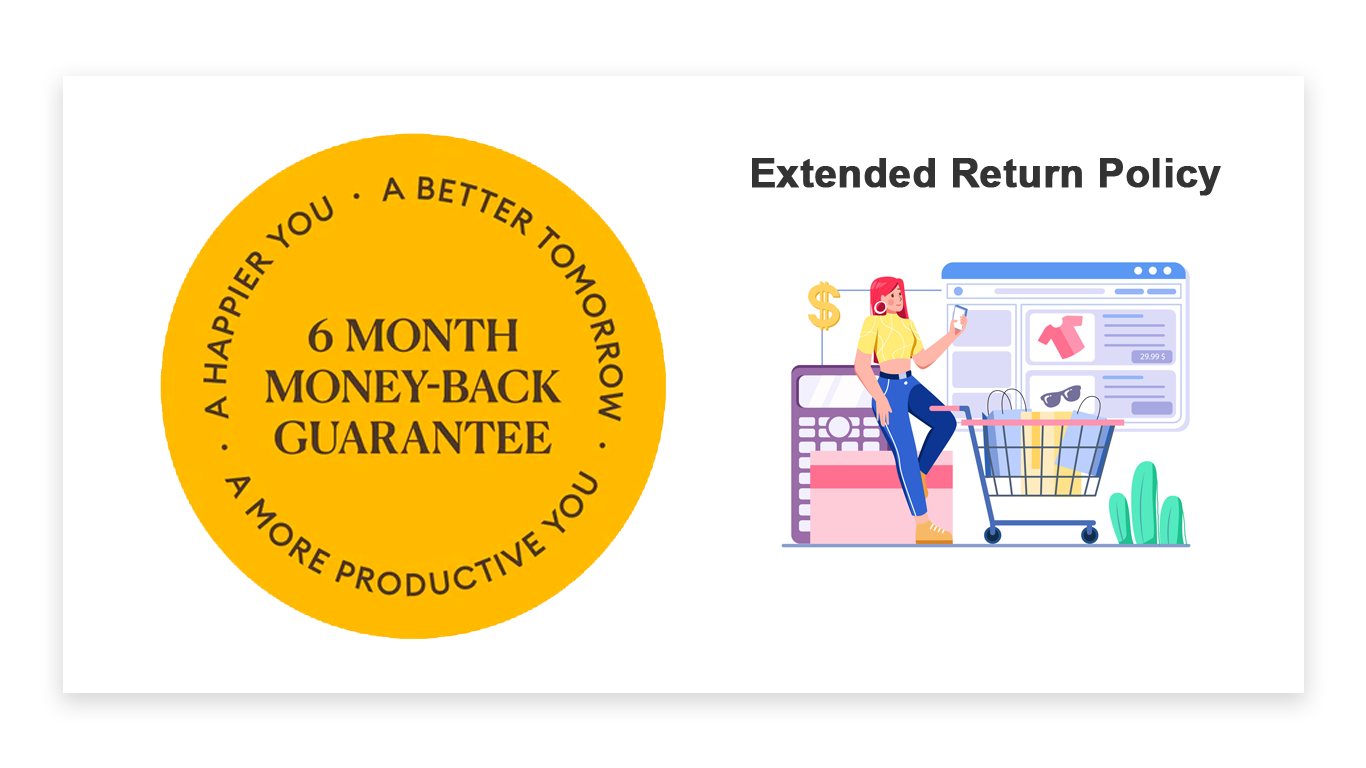
Want a guaranteed way to reduce product returns? Simply extend the length of time customers have to initiate a return. While this might seem counterintuitive, it’s based on a phenomenon referred to as the “endowment effect.”
The endowment effect refers to how customers become attached to items after a period of time. It plays a large role in why people hang onto items that have some sentimental value even if their value has declined over the years. And it can also drive buyers to hang onto an item they purchase instead of returning it.
Once a customer is holding a product in their hands, it becomes theirs. They own it - and that feeling can be powerful. The longer a person “owns” a product, the less likely they will be to return it. They become attached to it and decide they would rather keep it for themselves.
As an online retailer, you can also leverage the benefits of the endowment effect to illicit product reviews. When you incentivize customers to leave a review by offering them a discount on future purchases, they will feel obligated to use that discount rather than lose it.

Serial returners come in many forms – but all of them eat into a retail business’s bottom line. One of the most effective ways to reduce product returns is to identify those customers who are abusing or over-using your return policies.
According to the National Retail Federation, customer abuse of return policies costs retailers almost $16 billion every year. Lowering this amount even by a small percentage can make a big difference to your overall profit margins.
This type of shopper has different motivations for buying and returning items. Some of them simply have a shopping compulsion that leads to a high number of returns due to buyer's remorse.
Some purchase items, use them, and then return them (meaning the retailer probably can't resell them).
Others are simply crooks looking for an easy buck, who return counterfeit items, old items in place of new items, or items that aren’t what they purchased originally.
Regardless of their motivation, identifying these serial returners and limiting their ability to return items helps protect your business from fraud. Below are some tips on how to do exactly that:
Communicate specific return policies ahead of time – Make sure customers understand which items are eligible for a return and the specific requirements necessary for that return before their purchase. You can also follow up before accepting a return by asking the customer if they followed those requirements, such as only accepting wearable merchandise that is unworn and still has the tags attached.
Inspect high-value returns – You can’t always take the customer’s word for it, unfortunately. In the case of a high-dollar return, it will be beneficial to have a process in place to inspect the returned product and ensure the return is legitimate. Make sure the reasons listed for the return are verified, and that serial numbers match the original purchase.
Leverage analytics to identify frequent returners – You can use data collected during your sales and return process to identify those customers who have a high return rate. You then have the option of addressing the issue head-on, by issuing a polite warning to that customer or by limiting their ability to return items temporarily (or permanently).
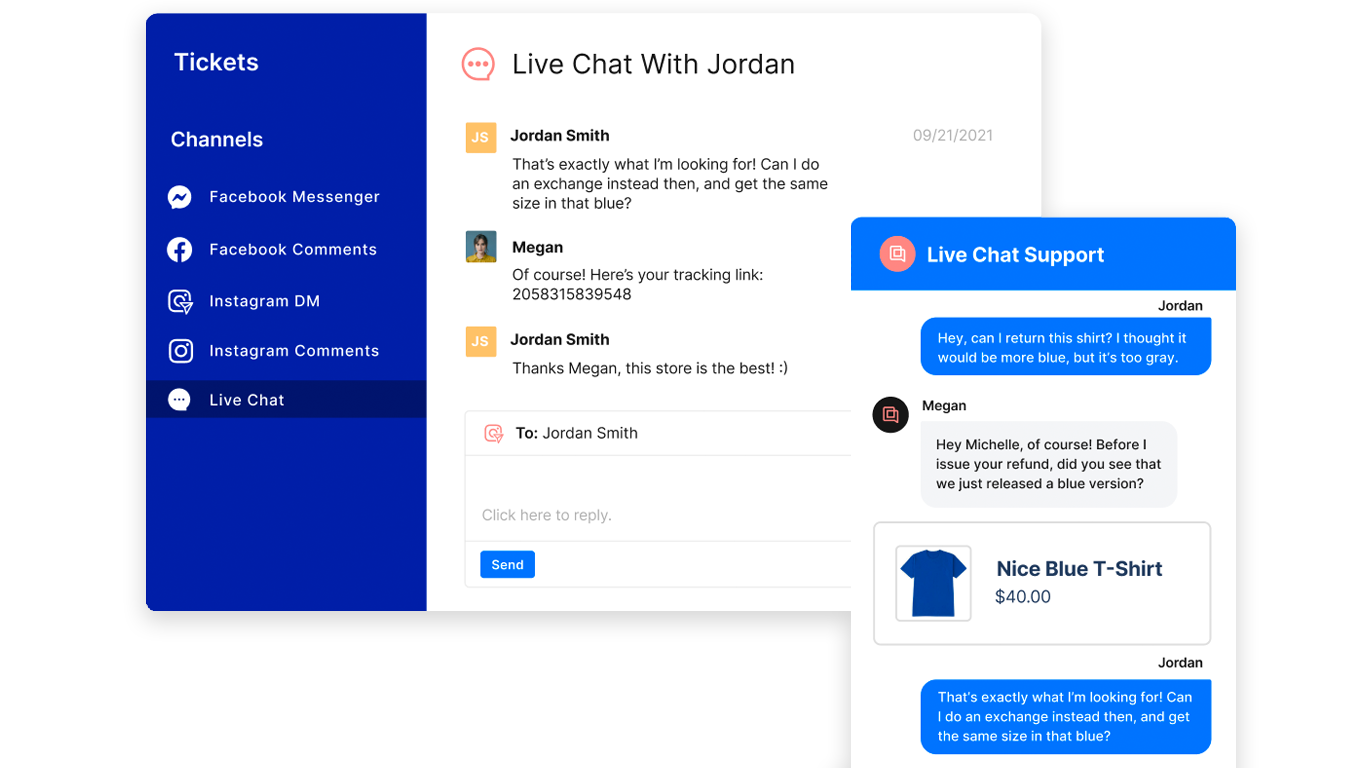
Providing great customer service is an effective way to reduce product returns. However, eCommerce stores are limited in their ability to interact with customers in the same way as physical retail stores.
Utilizing live chat systems and real-time support to customers during the buying process can eliminate some of the guesswork for shoppers. This means customers will have answers to all their questions before buying, so they're not tempted to simply wait and see if a product works out.
Studies show that 92% of customers who access a live chat feature are highly satisfied with the experience, a percentage higher than any other customer support channel. Shopify includes a live chat feature that retailers can use to communicate with customers, but other programs offer this ability as well.
Offering real-time customer support is a great tool for eCommerce retailers, but remember that even a great tool can cause more harm than good if it is not used correctly. Here are some common mistakes online retailers make when using real-time chat with customers.
Ecommerce stores must ensure that every step of the purchasing process is executed as smoothly as possible. Online shoppers are not limited in their choice of where to shop. All it takes is a click of the mouse and an unhappy customer is gone forever.
Product returns are an unfortunate part of doing business and something every retailer must manage. But there are ways to reduce product returns in your Shopify store.
Overall, the idea is to ensure that every customer, even those that need to make a return, are left feeling satisfied with the experience. Due to so much competition in eCommerce, repeat business is much more valuable than ever before, and developing customer loyalty is one of the best ways to ensure long-term success with any business.
When you pay attention to your return policy and processes, you can reduce product returns on Shopify and satisfy customers at the same time!

The supply chain is a term used to describe all the components required to transport goods from beginning to end, from production to the end...

A smart warehouse is a large building where raw materials and other consumer goods are stored using machines, computers, comprehensive software, and...
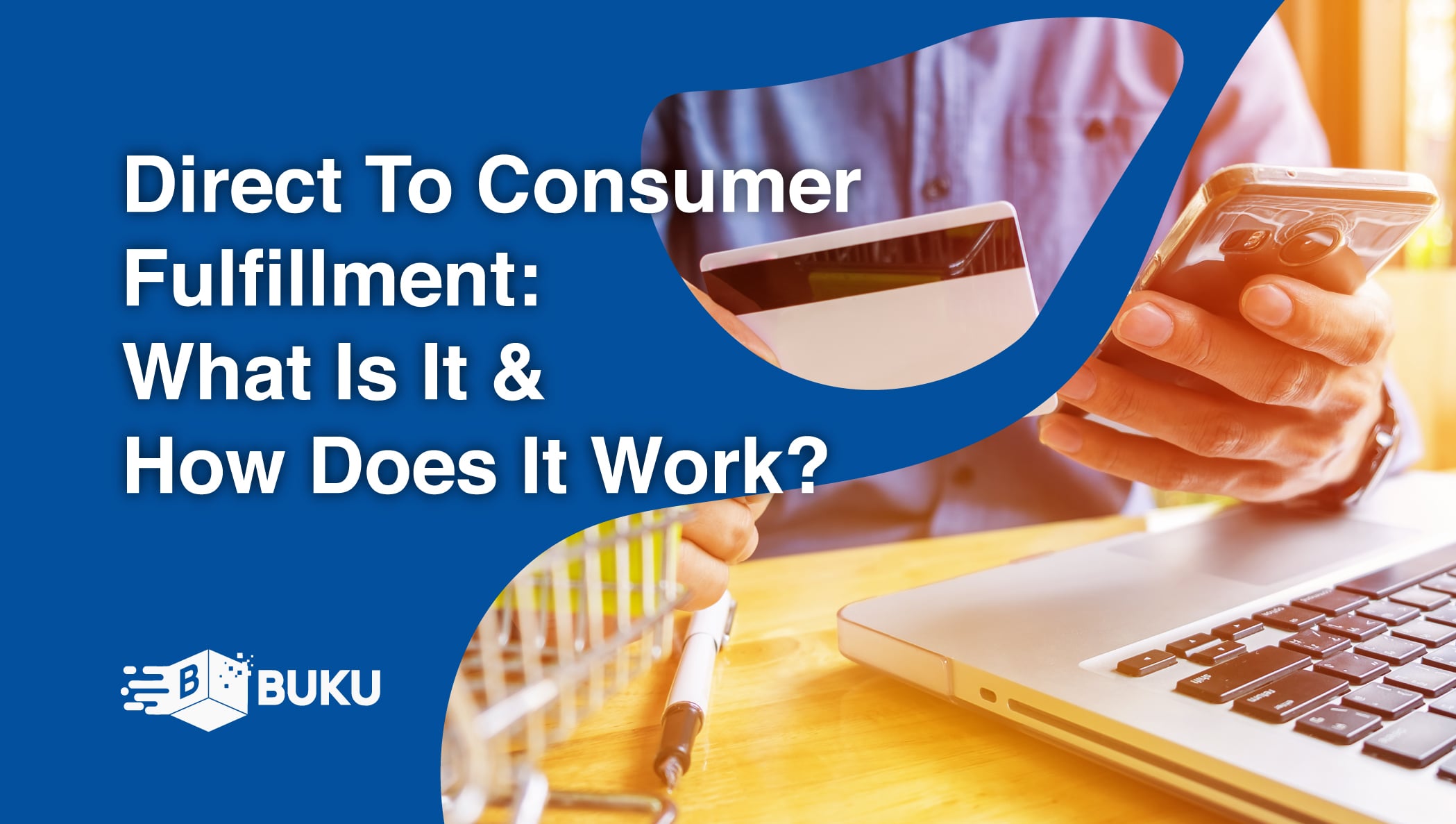
Direct-to-consumer (DTC) fulfillment is a strategy that helps brands sell and deliver their products directly to customers more efficiently while...